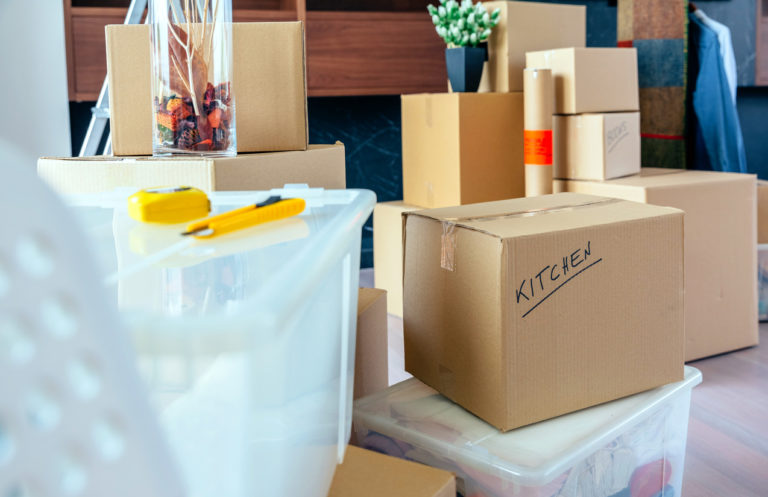Tips for Long-Term Storage During Home Renovations
Preparing for Your Home Renovations
Planning a home renovation is an exciting time, but it can also bring about the need for temporary storage solutions. To ensure your belongings are safe and well-organized during the renovation process, here are some helpful tips to consider:
Assessing Your Storage Needs
Before diving into the packing process, take a moment to evaluate your storage requirements. Make a list of the items you will need to store and estimate the duration of storage. This will help you choose the appropriate storage unit size and ensure that everything fits comfortably. If you have larger furniture pieces that won’t fit in a standard storage unit, consider renting a container or portable storage unit that can be placed on your property.
Declutter and Organize
While packing for storage, it’s an excellent opportunity to declutter and organize your belongings. Separate items into three categories: keep, donate, and discard. Consider donating or selling items that you no longer need or use. By reducing unnecessary belongings, you’ll save on storage space and make your post-renovation life more organized. Use this time to evaluate your wardrobe, kitchen gadgets, and other household items to ensure you only keep what you truly need.
Packing and Labeling
Proper packing and labeling are crucial for easy access to your belongings later. Use sturdy boxes, bubble wrap, and packing paper to protect fragile items. Place heavier items in smaller boxes to avoid overpacking and ensure easy handling. Pack similar items together and label each box with a description of its contents, indicating which room it belongs to. This will save you time and effort when you need to retrieve specific items from storage.
Choosing the Right Storage Facility
Selecting a reputable storage facility is essential for the safety of your belongings. Look for a facility that offers security features such as surveillance cameras, gated access, and individual unit alarms. Additionally, consider climate-controlled storage if you have temperature-sensitive items like wooden furniture or electronics. Climate control helps protect your belongings from extreme temperature changes and humidity, ensuring they remain in good condition throughout the storage period.
Properly Storing Furniture
When storing furniture, disassemble larger pieces whenever possible. This not only saves space but also helps protect them from damage. Wrap disassembled furniture parts in moving blankets or furniture covers to prevent scratches and ensure they remain in good condition. Store the disassembled parts together and label them accordingly for easy reassembly later. Place furniture in an upright position to maximize storage space and avoid placing heavy items on top of delicate furniture.
Protecting Valuable Items
Valuable items such as artwork, antiques, and jewelry require extra care during storage. Wrap delicate items in acid-free paper or bubble wrap to protect them from moisture and temperature fluctuations. Consider using specialized storage containers or boxes designed specifically for valuable items. If possible, keep valuable items in a separate, secure area within your storage unit. It’s also a good idea to consider obtaining insurance coverage for these valuable belongings while they’re in storage to provide an extra layer of protection.
Optimizing Storage Space
Make the most of your storage unit by utilizing vertical space. Stack boxes and furniture strategically, leaving walkways to access your items easily. Place frequently needed items towards the front of the unit for convenience. Consider using shelves or racks to maximize storage space and keep your belongings well-organized. You can also use plastic bins or storage containers that are stackable to create a more efficient storage system.
Creating an Inventory
Maintaining an inventory of the items you store is highly recommended. Keep a detailed list of everything you place in storage, including descriptions and photographs. This inventory will serve as a handy reference if you need to locate specific items or make an insurance claim in the future. You can also use inventory management apps or software to digitally track your stored items. Regularly update your inventory as you add or remove items from storage.
Regularly Check on Your Storage Unit
While your belongings are in storage, it’s a good idea to check on them periodically. Schedule regular visits to your storage unit to ensure everything remains in good condition. Look out for signs of moisture, pests, or any other potential issues. This allows you to address any problems promptly and take necessary measures to protect your belongings.
Updating Your Homeowner’s Insurance
Before storing your belongings, review your homeowner’s insurance policy to understand what is covered while in storage. Consider updating or adding a storage insurance policy to provide additional protection for your stored items. Storage insurance can help cover potential damages or losses that may occur during the storage period. Consult with your insurance provider to determine the best coverage options for your specific needs.
Final Thoughts
By following these tips, you’ll be well-prepared for long-term storage during home renovations. Remember to plan ahead, choose a reliable storage facility, pack and label your items carefully, and keep an inventory. With proper preparation and organization, you can confidently embark on your home renovation knowing that your belongings are safe and secure.
Georgetown Moving is a Full-Service Storage Company
Storage with Georgetown is easy. Here’s how it works:











